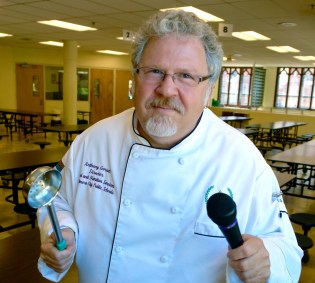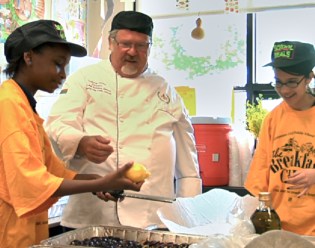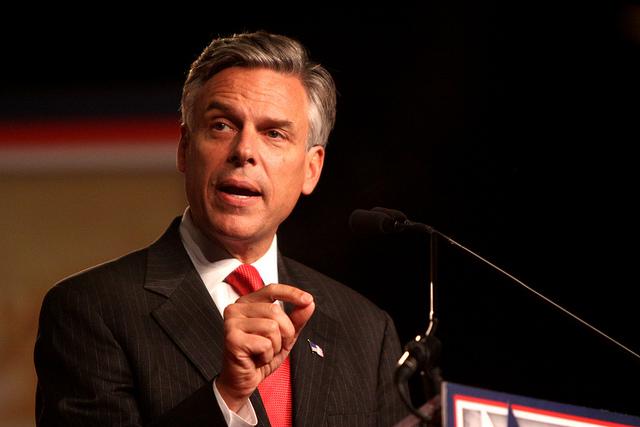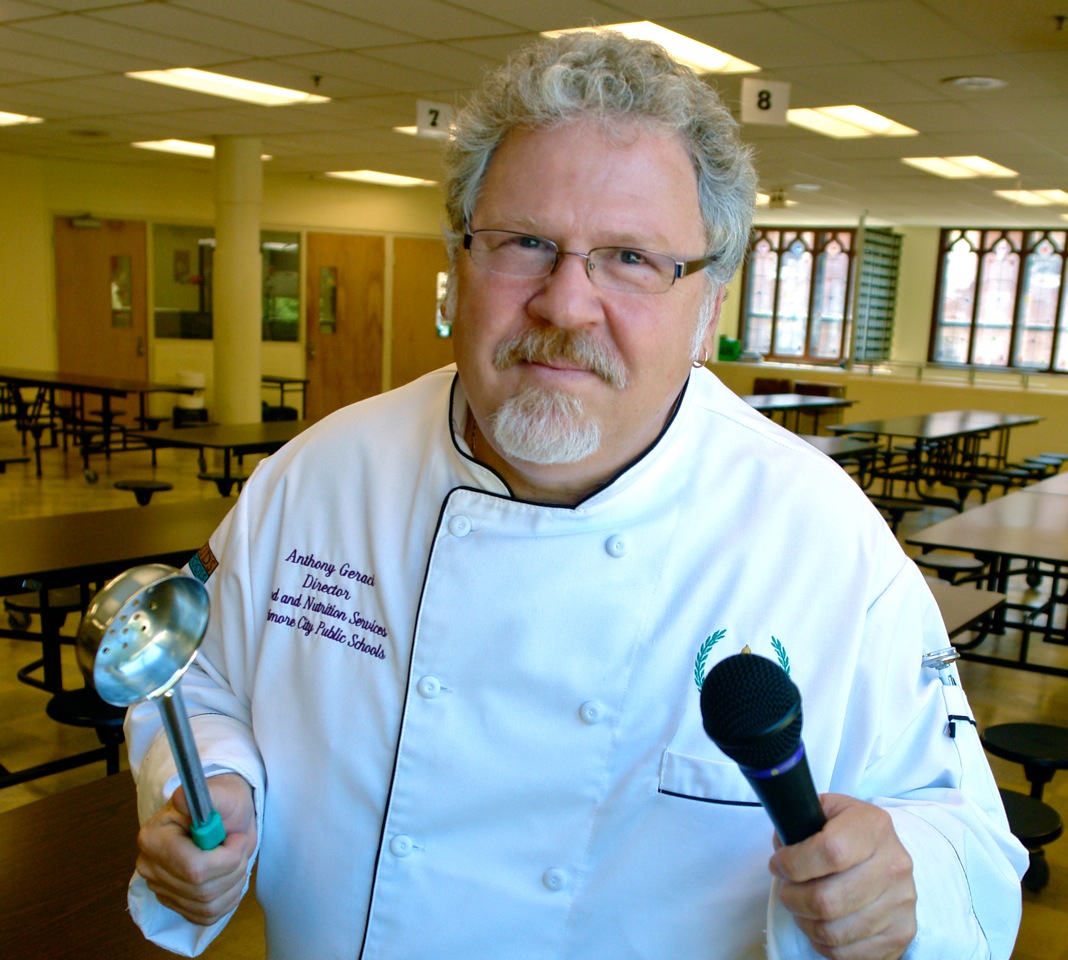
Tony Geraci.
School districts across the country are finding out that improving cafeteria food is never as simple as planting a garden. The bigger and poorer the district, the longer it takes to get anything done, and even smaller, well-funded districts struggle to make real change. That’s why, when Baltimore City Public Schools hired a new director of food and nutrition in 2008, food advocates watched eagerly to see how reform would play out there. Even Michael Pollan was quoted saying, “If Baltimore can pull this off, it will be a sign that the effort is worth making.”
Tony Geraci, Baltimore’s new “cafeteria man,” had his work cut out for him, and the gung-ho way he dove into the job caused no small amount of controversy in this city of 82,000 public-school students. When he stepped down from his position two years later, Geraci was accused of failing to live up to expectations, while he and his supporters blamed the slow progress on school-system bureaucracy.
Cafeteria Man, a documentary from Baltimore cinematographer Richard Chisolm, is a whirlwind look at Geraci’s tenure with the city’s schools. The film shows us snippets of the many ambitious projects the Cafeteria Man took on — from “breakfast boxes” that mask nutritious food with Happy Meal-like packaging, to class tours and student apprenticeships at a local farm, to Geraci’s frustrated attempt to find funding for a central kitchen. The chaos of working within a large public school district like Baltimore’s certainly comes clear, and a scene of horrified high schoolers tasting raw oysters for the first time illustrates the disconnect so many of the students have from real food. But seeing first graders at the farm munching with fascination on clover and radishes shows how this kind of hands-on approach can begin to bridge that divide — maybe just at a slower pace than eager advocates would prefer.
We caught up with Chisolm to talk more about Geraci, his legacy, and the challenges of achieving such ambitious reform.

A still from the film.
Q. Why did you want to make a film about Tony Geraci’s efforts in Baltimore?
A. I’m not a foodie by trade. I am a parent. What attracted me most was more the issue of how to make social change in America in institutions that are stagnant and bureaucratic and deadlocked, and school food to me was a great petri dish. Obama had just come to the White House at the same time Tony had come to Baltimore. The same thing happened to Tony that happened to Obama. He was brought in as sort of a messiah. Six months or a year later people say, “Why haven’t you fixed it?” I was much more interested in the portrait of a change agent than I was [in] calories and nutrition and obesity.
Q. Since you weren’t immersed in food issues before making this film, what surprised you the most about school food?
A. The way the food looked and tasted and smelled didn’t surprise me as much as the level of corruption and lethargy and cronyism that was governing the system. I didn’t know how this collusion between government and corporations was playing out for cafeteria food in schools in America. That was shocking to me, this system of bad food being profited on.
Q. After following Geraci’s efforts at school-food reform, what do you think it takes to make this kind of change? What can other cities learn from Baltimore?
A. We did not want to make a film [that was] one-size-fits-all. Baltimore in particular is a very difficult environment to make change in because it’s an undercapitalized city. There’s a lot of poverty, a lot of institutional lethargy.
I’m now convinced of the value of a visionary leader who is unafraid to audaciously challenge things that are wrong, and the value of that person to have contagious optimism so that people he’s talking to don’t feel threatened or bad about what they’re doing, but feel invited to participate in something wonderful. I’m cynical and jaded about my city of Baltimore, and I was intoxicated with [Geraci’s] optimism. I was driving down the road looking at drug corners in Tony’s car, and Tony says, “See those kids over there? Imagine them working in a restaurant.”
The cafeteria system was run into the ground slowly. Right after [World War II] it was great, they had silverware and people were cooking in every school in the country. It was fresh and fairly local and smelled good and tasted good. It took 50 years to fuck up school food — why would it take two years or five years to fix it? It’s going to take a long time and a lot of money and a lot of creative thinking to make it work.
Q. What about kids’ tastes? That seemed to be a problem in Baltimore, where kids, parents, and especially the meat industry were upset about the vegetarian food served on Meatless Mondays (“You wouldn’t believe the number of calls I get from parents on Mondays who are angry because their kids can’t get a chicken box,” Geraci told Baltimore’s Urbanite magazine.) Even if you can get healthy, fresh food into schools, will kids eat it?
A. The fast food companies have been working for decades with science to find out the fats and sugars and salts that our brain chemistry is evolutionarily wired for. It’s irresistible, because they know exactly what works and what doesn’t. Most of us are addicted to bad food.
What we tried to do in the film is symbolize [that] with the little first graders, taking them to the farm and having them taste fresh food for the first time. It animated their experience with food. Even if they’re still eating at McDonald’s they at least got exposure.
The other thing you do with kids is tell them how we’re being fucked over by corporations. If you go to a fast food place, you’re giving money to the wrong man. There’s this other place down the street called a farmers market. These people care about you.
Q. What’s the status of Baltimore school food today? What do you think of criticisms that Geraci’s efforts failed?
A. The [school] farm didn’t exist at all [before he arrived]; he invented that. Now it’s got a teaching kitchen, and there are constant rotating field trips, more arable land, worm space, mulch space, constant training for city kids. Most of the food is locally sourced now. The after-school supper [program], which was a pilot in the film — now there’s 20 or 30 schools doing it. Those kids now have a second meal, and their parents can come and have it for $2 or $3. There are things like the central kitchen that are still caught up in bureaucracy, but they are being dealt with, just in slow motion. Some of the things he succeeded in are invisible — people aren’t jumping up and down [because] the procurement contracts are less corrupt.
There are people who resented the hell out of Tony because they were happy signing two documents and not doing anything else in a day. He came along and said, “OK, now we have to work harder.”
Watch the trailer:



